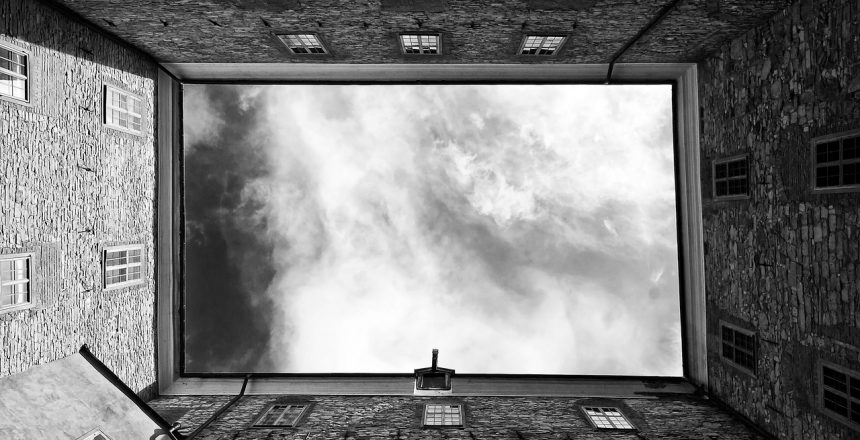Understanding who is responsible for maintenance and repairs in a leasehold block of flats is essential for both freeholders and leaseholders. Having this awareness will enable both stakeholders to effectively take care of their building and ensure that the structure and appearance are well maintained in order to preserve the property’s value and safety.
Blocks of flats can require a considerable amount of maintenance both internally and externally. From roofs to plumbing, gardens to carpets, windows to doors, there’s a plethora of items that will need some level of attention from time to time. But ensuring that all aspects of the building receive the care and consideration that they require, is ultimately dependent on the person responsible.
Unfortunately, it’s very common for both freeholders and leaseholders to be unaware of their specific responsibilities to repair and maintain different aspects of their building. This can lead to disputes, legal battles and ultimately leave the property vulnerable to damage and a diminishing value. But with somewhat complicated leases to decipher by freeholders who are generally not qualified in such legal matters, it’s not surprising that the lines of responsibility can be blurred.
To help you gain a better understanding of your responsibilities for maintenance and repairs for your freehold property and those of your leaseholders, we’ve put together a list of typical responsibilities for each party. Of course, the specific responsibilities will be dictated by the lease for the property, so this information should only be used as a guide.
Typical freeholder responsibilities to repair and maintain
The freeholder, as the owner of the building, is responsible for arranging repairs and maintenance to the communal areas. If the leaseholders have gained the Right to Manage, they will take over these responsibilities from the freeholder. These include:
Structural/decoration
- Painting and decorating the exterior of the building
- Painting and decorating internal communal areas
- Communal doors, communal gates, communal door furniture (handles, etc)
- Internal structural walls, load-bearing walls, and walls dividing the flat from other common parts of the building and adjacent properties
- Roofs, gutters, and window frames
- Foundations, drains, waste pipes, and soil pipes
- Communal stairs, walkways, passages, and paths
- External fixtures, fittings, and equipment
Facilities
- Communal central heating and hot water
- Communal lighting and electricity
- Door entry systems
- Lifts
- Communal TV aerial and socket
- Smoke and fire alarms
- Refuse disposal chutes and communal dustbins
- Communal grounds and gardens
- Pipes supplying mains water
- Gas pipes within the block
It is the leaseholder’s responsibility to pay for the above works, with the money usually obtained via service charges and apportioned to each leaseholder according to their lease by the freeholder.
Typical leaseholder responsibilities to repair and maintain
Leaseholders are typically responsible for all repairs and maintenance within their flat. This includes:
Structural/decoration
- Window glazing inside and out, window catches, sash cords,
- Floorboards, floor coverings/tiles, skirting boards
- Internal doors, individual front doors, their frames, hinges, and locks
- Plaster covering on walls and ceilings
- Ceilings and ceiling battens
- Air vents and extractor fans that serve just your property
- Kitchen units and appliances
- Internal decoration, fixtures, and fittings
- Light bulbs and fuses
Facilities
- Individual heating systems (central heating) and appliances
- Plumbing and pipework within the property
- Water tanks and cisterns
- Sanitary ware – toilets, baths, sinks, showers, taps
- Electric fires, gas fires, and fireplaces
- Water, gas, and electricity to your home
- Private gardens included within an individual lease
It is common for a lease to stipulate that the leaseholder must keep their demised premises in a good state of repair throughout their lease term. The lease may also require that the lessee decorate periodically and when the lease is reaching the end of its term. If the leaseholder fails to conform, they will be in breach of their lease, and in which case, you as the freeholder could take legal action to enforce the covenant that they signed up to.
Your leaseholders should also pay particular attention to any areas where water could potentially leak from, such as shower and bath sealant and pipework. If water escapes into another flat or into a communal area, they may be responsible for any repairs or damage that is caused and the subsequent cost for the repairs.
It is also advisable for leaseholders to have their gas appliances and boiler serviced periodically by a reputable, Gas Safe approved contractor, although this may not be a condition of their lease.
Maintenance contracts in blocks of flats
In order to provide consistent, specialist maintenance to certain parts of a block of flats such as the lifts, it is beneficial to have contracts in place with service engineers and other contractors. They will therefore be responsible for ensuring the safety and working order of these areas in and around the block of flats within scheduled time frames.
As a result of the provisions of the Construction Design and Maintenance regulations, any block that was built in the last 15 years should have a health and safety file containing maintenance requirements. Such manuals can also arise from any major works projects completed in recent years which fall within the scope of the regulations.
When contractors are used, it is essential to ensure that maintenance is being carried out to standard and that their schedule of works is comprehensive. Of course, if you do not have the relevant qualifications or experience, it may help to employ a project manager who can oversee the works on your behalf.
What happens if you fail to provide satisfactory maintenance?
- Your building can become unsafe for residents, visitors, and contractors
- Your insurance premiums and policy excesses can rise
- The saleability and value of flats will diminish
- Warranty requirements may be invalidated
- You and/or the building could be in breach of statutory requirements
- You could breach Landlord’s covenants in the lease
- Your leaseholders could face large and unexpected bills for emergency works
It is therefore essential that repairs and maintenance are carried out effectively and to the appropriate standards or you could find yourself in a lot of trouble and even with a criminal record. So, if you have a responsibility to organise repairs and maintenance for your freehold property, the best thing that you can do is plan in advance, budget effectively and be proactive.
However, this is by no means an easy task, especially for new freeholders without extensive experience in managing a residential freehold or those without the time and patience to dedicate to managing their property and meeting the myriad of freeholder responsibilities.


